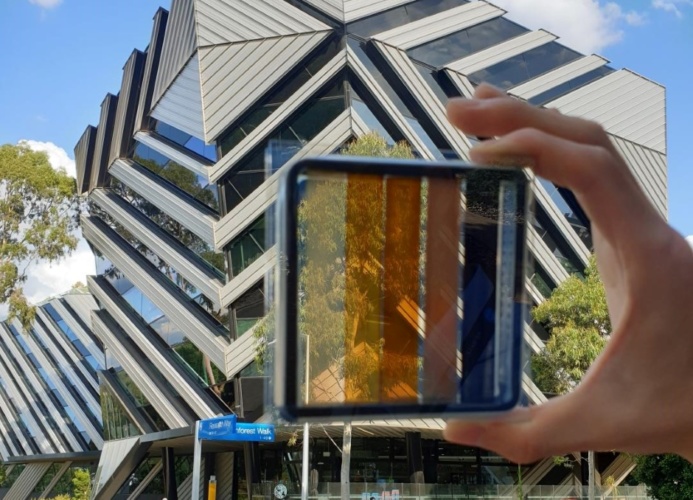
The researchers - led by Prof Jacek Jasieniak from the ARC Centre of Excellence in Exciton Science and Monash University - have made the breakthrough with next-generation perovskite solar cells. They are now investigating how the new technology could be built into commercial products with Viridian Glass, Australia's largest glass manufacturer.
Solar powered smart windows offer retrofit solution to temperature control
The researchers claim that two square metres of solar window will generate about as much electricity as a standard rooftop solar panel. The research, supported by the Australian Renewable Energy Agency (ARENA), is described in a paper published in Nano Energy.
Previous designs have failed because they were very expensive, unstable or inefficient. Prof Jasieniak's team used an organic semiconductor that can be made into a polymer and used it to replace a commonly used solar cell component (Spiro-OMeTAD), which shows very low stability because it develops a watery coating.
"Rooftop solar has a conversion efficiency of between 15 and 20 per cent," Prof Jasieniak said in a statement. "The semi-transparent cells have a conversion efficiency of 17 per cent, while still transmitting more than 10 per cent of the incoming light, so they are right in the zone. It's long been a dream to have windows that generate electricity, and now that looks possible."
Co-author and CSIRO research scientist, Dr Anthony Chesman, said the team is now working on the manufacturing process.
"We'll be looking to develop a large-scale glass manufacturing process that can be easily transferred to industry so manufacturers can readily uptake the technology," he said.
According to Exciton Science, solar windows will be a boon for building owners and residents, and will bring new challenges and opportunities for architects, builders, engineers and planners.
"There is a trade-off," said Prof Jasieniak, "The solar cells can be made more, or less, transparent. The more transparent they are, the less electricity they generate, so that becomes something for architects to consider."
He added that solar windows tinted to the same degree as current glazed commercial windows would generate about 140W/m2.
The first application is likely to be in multi-storey buildings.
Large windows deployed in high-rise buildings are expensive to make but the additional cost of incorporating the semi-transparent solar cells into them is expected to be marginal.
"But even with the extra spend, the building then gets its electricity free," Prof Jasieniak said.
Jasieniak estimates that the first commercially available cells based on the technology will be launched within 10 years.




Poll: Should the UK’s railways be renationalised?
I think that a network inclusive of the vehicles on it would make sense. However it remains to be seen if there is any plan for it to be for the...